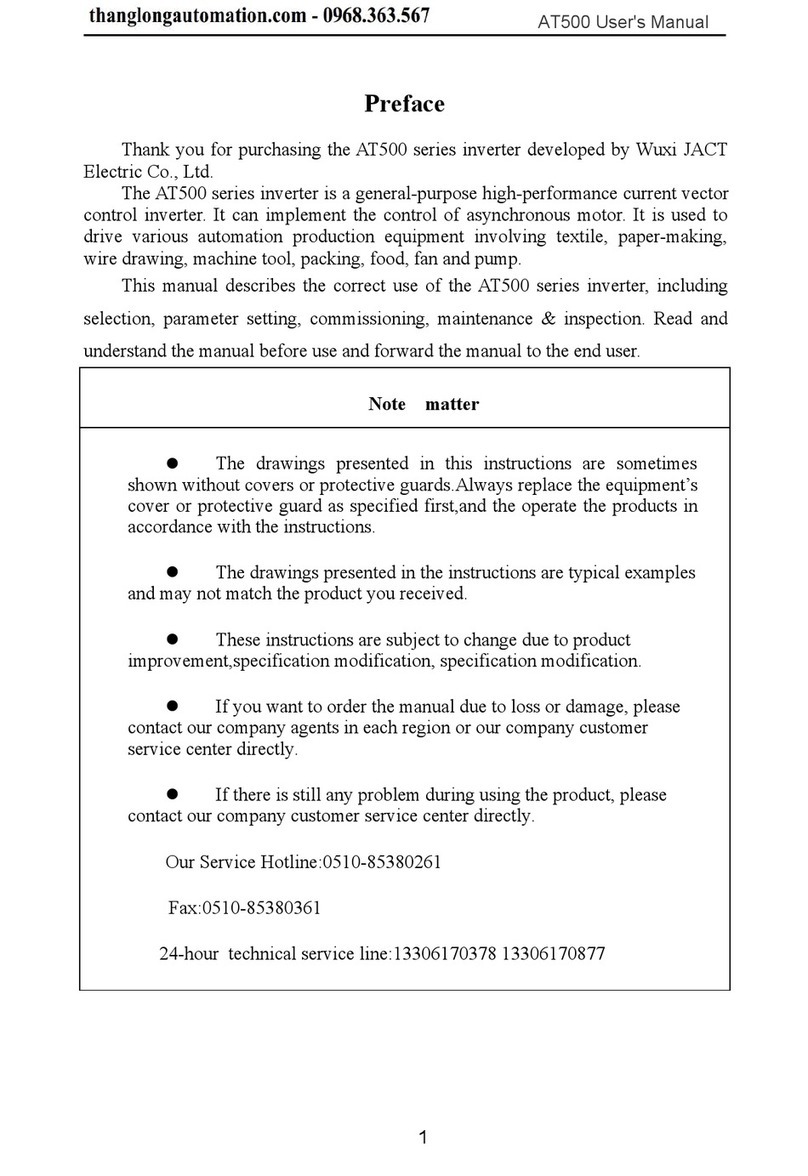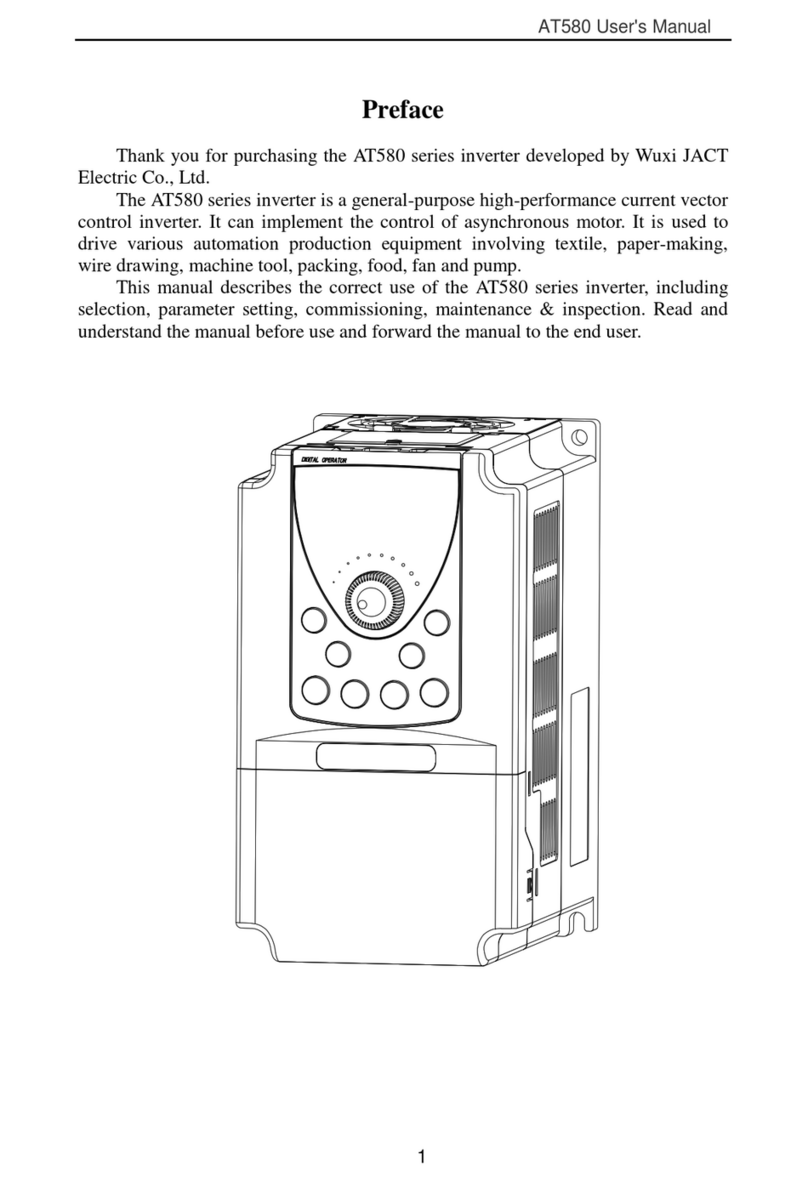
Contents AT550 Series Inverter Manual
Contents
Preface.............................................................................................................................................................- 1 -
Safety Information and Precautions................................................................................................................- 2 -
Contents.......................................................................................................................................................... - 4 -
Chapter 1 Product Information....................................................................................................................... - 5 -
1.1 Product Type Identification............................................................................................................ - 5 -
1.2 Product Nameplate......................................................................................................................... - 5 -
1.3 AT550 Inverter Series..................................................................................................................... - 6 -
1.4 Product Description........................................................................................................................ - 7 -
1.6 Product Appearance and Dimensions........................................................................................... - 10 -
1.7 Keyboard Appearance and Dimensions........................................................................................- 13 -
1.8 Appearance and Hole Size of the Keyboard Tray.........................................................................- 13 -
1.9 Appearance and Dimensions of the Double Display Keyboard and Tray.................................... - 14 -
Chapter 2 Mechanical Installation................................................................................................................ - 15 -
2.1 Installation Environment.............................................................................................................. - 15 -
2.2 Installation Space and Directions................................................................................................. - 15 -
2.3 Dismantling of the Cover Plate.................................................................................................... - 17 -
Chapter 3 Electrical Installation....................................................................................................................- 18 -
3.1 Electrical Installation....................................................................................................................- 18 -
3.2 Description of Peripheral Electrical Devices................................................................................- 19 -
3.3 Peripheral Electrical Components Selection Guidance................................................................ - 20 -
3.4 Selection of Braking Unit and Braking Resistor.......................................................................... - 20 -
3.5 Selection of Expansion Card........................................................................................................ - 22 -
3.6 Wiring Method..............................................................................................................................- 23 -
Chapter 4 Keyboard and Display.................................................................................................................. - 36 -
4.1 Operation and Display Interface...................................................................................................- 36 -
4.2 Keyboard Indicators Description..................................................................................................- 37 -
4.3 Keyboard Button Description.......................................................................................................- 37 -
4.4 Viewing and Modifying Function Codes......................................................................................- 37 -
4.5 Selecting Menu Mode...................................................................................................................- 38 -
Chapter 5 Basic Operation and Test Run...................................................................................................... - 39 -
5.1 Quick Adjustment Guidance.........................................................................................................- 39 -
5.2 Precautions Before Power-On...................................................................................................... - 40 -
5.3 Display Status After Power-On.................................................................................................... - 40 -
5.4 Motor Control Methods Selection................................................................................................ - 40 -
5.5 Initialization of Parameters...........................................................................................................- 42 -
5.6 Operation Commands Source Selection....................................................................................... - 42 -
5.7 Frequency Source Selection......................................................................................................... - 43 -
5.8 Stop Modes Selection................................................................................................................... - 45 -
5.9 Observation of Operation Status via DO and AO.........................................................................- 45 -
Chapter 6 Function Parameter List............................................................................................................... - 46 -
Chapter 7 Function Parameter List............................................................................................................... - 75 -
Chapter 8 Maintenance and Troubleshooting............................................................................................... - 97 -
8.1 Daily Maintenance and Inspection of AT550............................................................................. - 122 -
8.2 Warranty..................................................................................................................................... - 123 -
8.3 Faults and Solutions................................................................................................................... - 123 -
Appendix A: MODBUS Communication Protocol.....................................................................................- 129 -
1.1 Protocol Contents....................................................................................................................... - 129 -
1.2 Communication Frame Description............................................................................................- 129 -
1.3 Communication Data Address Definition...................................................................................- 132 -
1.4 Description of Group FD Communication Parameters.............................................................. - 134 -





























